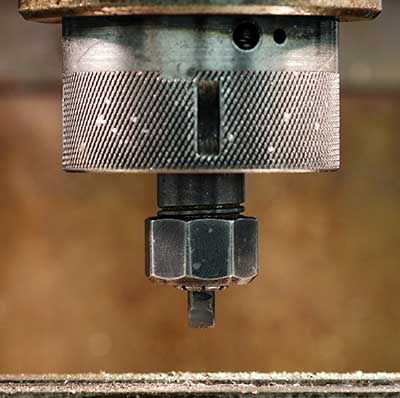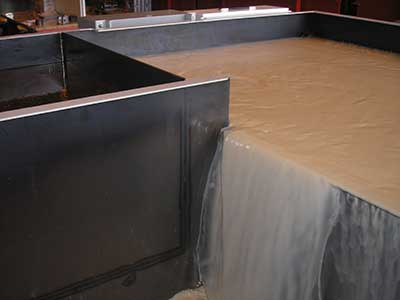
Cutting fluids play a very important role in metalworking by providing lubrication to the working area which decreases the amount of heat generated while cutting—preventing tools from exceeding critical temperature ranges.
However, cutting fluid deteriorates over time as it becomes contaminated with tramp oils, metal fines, and bacteria. As it breaks down, it can damage machining tools, pumps, and sumps in the following ways:
When cutting fluid is deteriorated it does not perform correctly and cutting tools soften, wear quickly, and they fail to meet tolerances for surface finish and part size if temperatures climb too high. This deterioration also lowers coolant concentration causing cutting tools to dull prematurely or even break during the first cut.

Repairing or replacing machinery and tooling that is worn out prematurely or broke because of coolant contamination, or coolant that doesn’t have the proper concentration, is expensive. Sophisticated machining systems cost hundreds of thousands of dollars and cutting tools account for 3% to 5% of total manufacturing cost.
Additionally, other costs to repair or replace machining tools include:
One other replacement challenge includes extended downtime due to long lead times from the tool supplier. Modern Machine Shop reports that in 2017 and 2018, demand for machine tools had surpassed supply so much that average lead times for a machine tool increased from four or five months to eight months to 2 years.
Maintaining the coolant manufacturer’s recommended concentration level is essential to achieving lubricity sufficient for protecting the machine tool and is a major contributor to obtaining maximum service life from metalworking tools.
Coolant recycling equipment automates the management of coolant quality by removing free-floating and mechanically dispersed contaminants-including tramp oils and bacteria—and adjusts fluid concentration for recovery.
Fluid filtration and recycling extends coolant life two to five times over typical change-out periods. The clean, recycled coolant reduces sump maintenance, improves machining quality and extends tool life. Studies show that tool life can be significantly extended—up to 25%—with effective coolant recycling equipment. In addition, fluid recycling significantly reduces new fluid purchase costs and lower hazardous waste disposal costs to provide ROI in multiple ways.

Machining companies that invest in a fluid recycling system reduce operating costs while also extending the value of their assets. These systems are shown to prolong tool life and significantly reduce new coolant purchases.
If your facility’s expectations are to obtain 10 to 15 years of service from metalworking machinery, recycled coolant could help prevent premature wear and add two to three years to the system’s life. Two to three additional years of service during favorable market conditions provides manufacturers the opportunity to invest those savings into other production advancements. A few more years of service during a recession may permit the delay of capital investments until a time of more favorable market conditions. In either scenario, the bottom line will be improved, and the facility will be poised for anything the future holds.
In this paper, we examine some of the factors that can significantly impact profit margins for metalworking shops. Additionally, we will make the case for minimizing that impact with metal scrap processing equipment and fluid recycling systems. Read our white paper